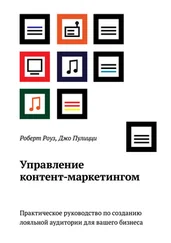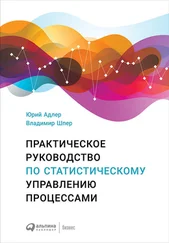36. Kaplan, R. and Norton D. (1996). The Balanced Score Card, Translating Strategy into Action. Harvard Business School Press.
37. Kaplan, R. and Norton, D. (2004). Strategy Maps: Converting Intangible Assets into Tangible Outcomes. Harvard Business School Press.
38. Keen, P. (1997). The Process Edge. Harvard Business Press.
39. Koop, R., Rooimans, R. and de Theye, M. (2003). Regatta, ICT implementaties als uitdaging voor een vier-met-stuurman. ten Hagen Stam.
40. Kramer, N. J., Kramer, T. A. and de Smit, J. (1991). Systeemdenken.
41. Lewin, K. (undated). Frontiers in group dynamics. Human Relations Journal, 1.
42. Lewis, L. (1993). Tandy Users Group Speech 1993 Convention, Orlando, Florida.
43. Luftman, J. N. (2003). Assessing strategic alignment maturity. In: Competing in the Information Age: Align in the Sand (J. N. Luftman, ed.), 2nd edn. Oxford University Press.
44. Masaaki Imai (1986). Kaizen: The Key to Japan’s Competitive Success. McGraw-Hill/Irwin.
45. Masaaki Imai (1998). Kaizen. McGraw-Hill Professional Book Group.
46. Maull, R. S., Tranfield, D. R. and Maull, W. (2003). Factors characterising the maturity of BPR programmes. International Journal of Operations & Production Management, 23 (6), 596–624.
47. McCormack, K. P. (1999). The Development of a Measure of Business Process Orientation. Presented at the European Institute for Advance Studies in Mangement: Workshop on Organizational Design. Brussels, Belgium, March 1999.
48. Miers, D. (2005). BPM: driving business performance. BP Trends, 5 (1).
49. Mutafelija, B. and Stromberg, H. (2003). Systematic Process Improvement using ISO 9001:2000 and CMMI. Artech House.
50. Neely, A., Adams, C. and Kennerly, M. (2002). Performance Prism: The Score Card for Measuring and Managing Business Services. FT Prentice Hall.
51. Nelis, J. and Oosterhout, M. (2003). Rendement uit processen. Informatie, May (available online at www.informatie.nl).
52. Nelson, M. (2003). Enterprise Architecture Modernization Using the Adaptive Enterprise Framework. The Mercator Group.
53. Newsletter for Organizational Psychologists, 1995.
54. Nohria, N., Joyce, W. and Roberson, B. (2003). What really works. Harvard Business Review, July.
55. Oxford University Press. (2004). Oxford English Dictionary: The definitive record of the English language. Retrieved 5 January 2006, from http://dictionary.oed.com
56. Paulk, M. C., Curtis, B., Chrissis, M. B. and Weber, C. V. (1993). The Capability Maturity Model for Software, Version 1.1 (No. CMU/SEI-93-TR-24). Software Engineering Institute.
57. Pol, M., Teunissen, R. and van Veenendaal, E. (2002). Software Testing, A Guide to the TMap ® . Pearson Education.
58. Porter, M. (1980). Competitive Strategy: Techniques for Analyzing Industries and Competitors. Free Press.
59. Porter, M. (1985). Value Chain, Competitive Analysis: Creating and Sustaining Superior Performance. Free Press.
60. Pritchard, J.-P. and Armistead, C. (1999). Business process management – lessons from European business. Business Process Management Journal, 5 (1), 10–32.
61. Rosemann, M. (2005; unpublished). 22 Potential Pitfalls of Process Management.
62. Rosemann, M. and de Bruin, T. (2004). Application of a holistic model for determining BPM maturity. In: Proceedings of the AIM Pre-ICIS Workshop on Process Management and Information Systems (Actes du 3e colloque Pre-ICIS de l’AIM), Washington, DC, 12. December 2004 (J. Akoka, I. Comyn-Wattiau and M. Favier, eds). AIM.
63. Rosemann, M. and de Bruin, T. (2005). Towards a business process management maturity model. Proceedings of the 13th European Conference on Information Systems (ECIS 2005), Regensburg, 26–28 May 2005. ECIS.
64. Rummler, G. A. (2004). Serious Performance Consulting. International Society for Performance Improvement and ASTD.
65. Rummler, G. A. and Brache, A. P. (1995). Improving Performance. Jossey-Bass Publishers.
66. Scheer, A.-G., Abolhassan, F., Jost, W. and Kirchmer, M. (2003). Business Process Change Management. Springer.
67. Smith, A. (1909–1914). Wealth of Nations. The Harvard Classics.
68. Smith, H. and Fingar, P. (2002). Business Process Management – The Third Wave. Meghan-Kiffer Press.
69. Smith, H. and Fingar, P. (2004). Process Management Maturity Models. Available online at http://www.bptrends.com/resources_publications.cfm(accessed 23 July 2005).
70. Spanyi, A. (2004). Business Process Management is a Team Sport: Play it to Win! Meghan Kiffer.
71. Stace, D. and Dunphy, D. (1996). Beyond the Boundaries. McGraw-Hill.
72. Taylor, F. W. (1998). The Principles of Scientific Management. Dover Publications (reprint of 1911 original).
73. Treacy, M. and Wiersma, F. (1997).The Discipline of Market Leaders. Perseus Books.
74. Van de Berg, H. and Franken, H. (2003). Handboek Business Process Engineering. BizzDesign B. V.
75. Van den Berg, M. and van Steenbergen, M. (2002). DYA © : Speed and Alignment of Business and ICT Architecture. Sogeti Nederland.
76. Van der Marck, P. (2005). Scoren met uw Waardecreatie (Scoring with your value proposition), at www.managementsite.nl/content/articles/298/298.asp.
77. Wagter, R., van den Berg, M., Luijpers, J. and van Steenbergen, M. (2002). DYA © : Dynamic Enterprise Architecture: How to Make it Work. Sogeti Nederland.
78. Walton, M. (1986). The Deming Management Methods. The Berkley Publishing Group.
79. Ward, J. and Peppard, J. (2002). Strategic Planning for Information Systems. John Wiley & Sons.
80. Wertheim, E., Love, A., Peck, C. and Littlefield, L. (1998). Skills for Resolving Conflict. Eruditions Publishing.
81. Wheatley, M. J. (1994). Leadership and the New Science. Berrett-Koehler.
82. Zachman, J. A. (1987). A framework for information system architecture. IBM Systems Journal, 26 (3).
¹ Этот закон был принят Конгрессом США после серии скандалов и разоблачений махинаций в руководстве крупных фирм, в первую очередь – энергетического гиганта, компании Enron, и телекоммуникационной компании Wordlcom, которые с помощью бухгалтерских уловок раздували прибыль и поддерживали высокую цену акций. Закон ужесточает учет и отчетность, но вызывает дополнительные, иногда значительные, затраты на соблюдение требований закона. – Прим. науч. ред.
Система Базель II представляет собой международные высокие стандарты банковской деятельности, отличающиеся сложным подходом к оценкам операционных и кредитных рисков. – Прим. науч. ред.
Конец ознакомительного отрывка
Купить книгу












